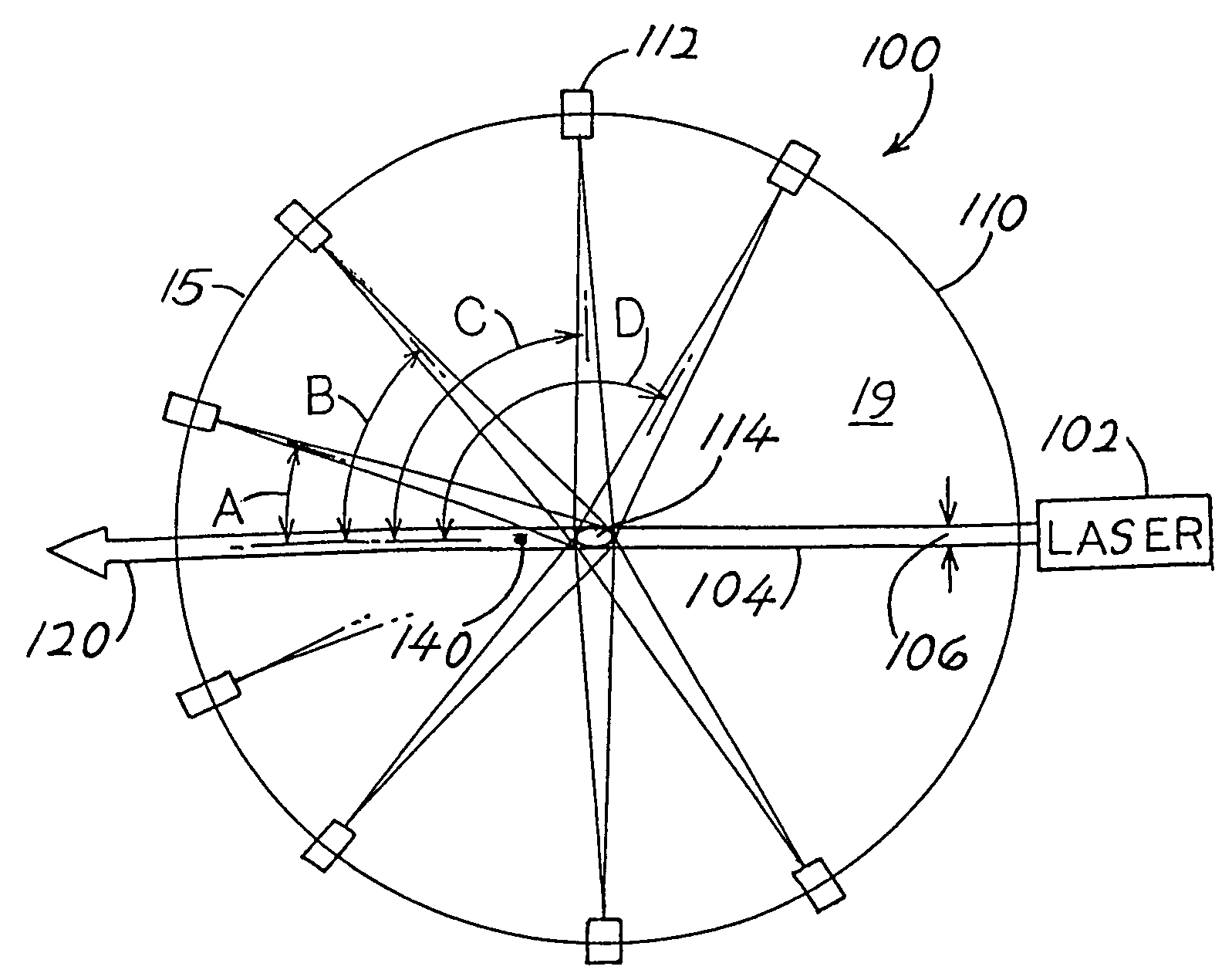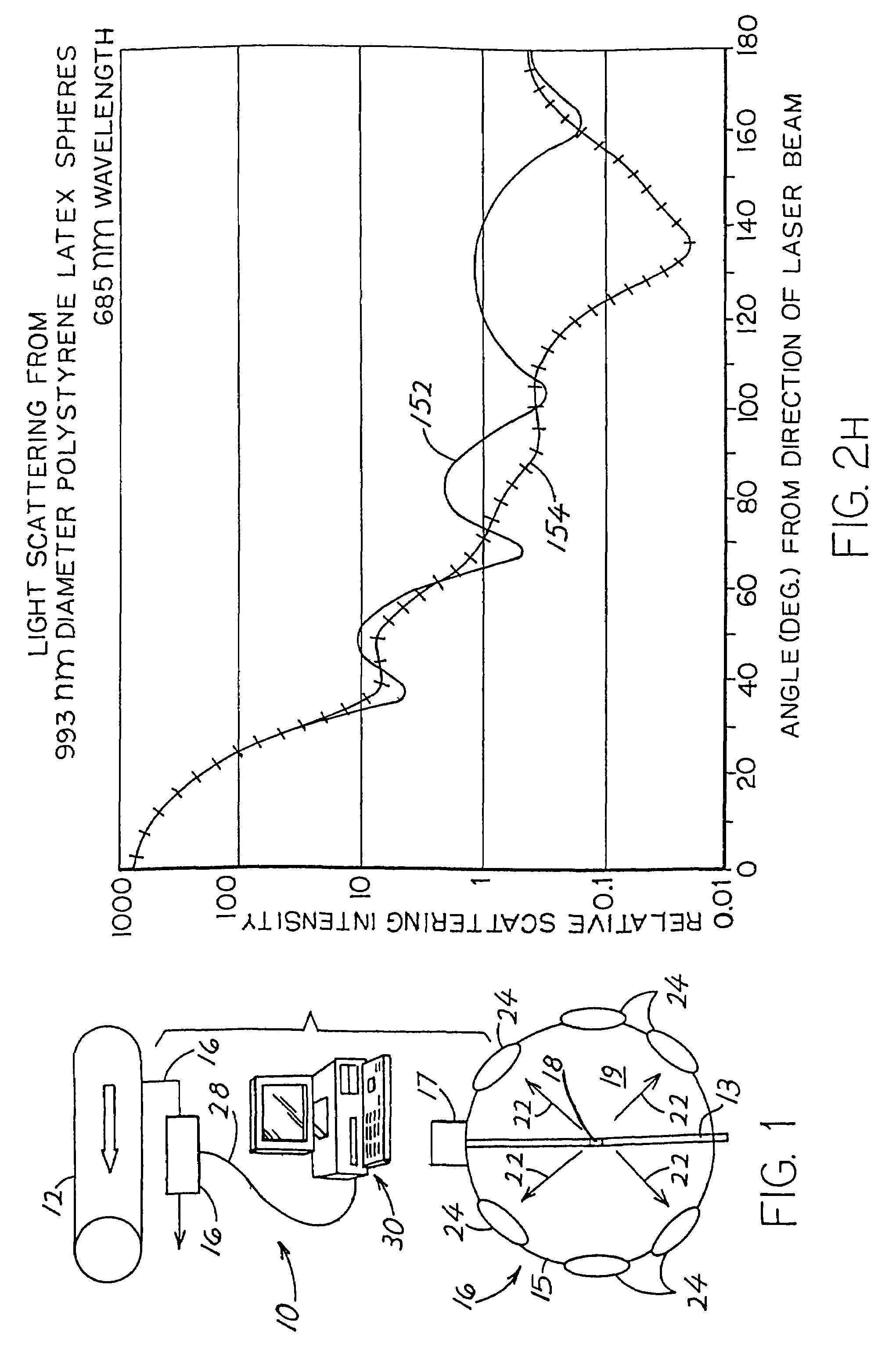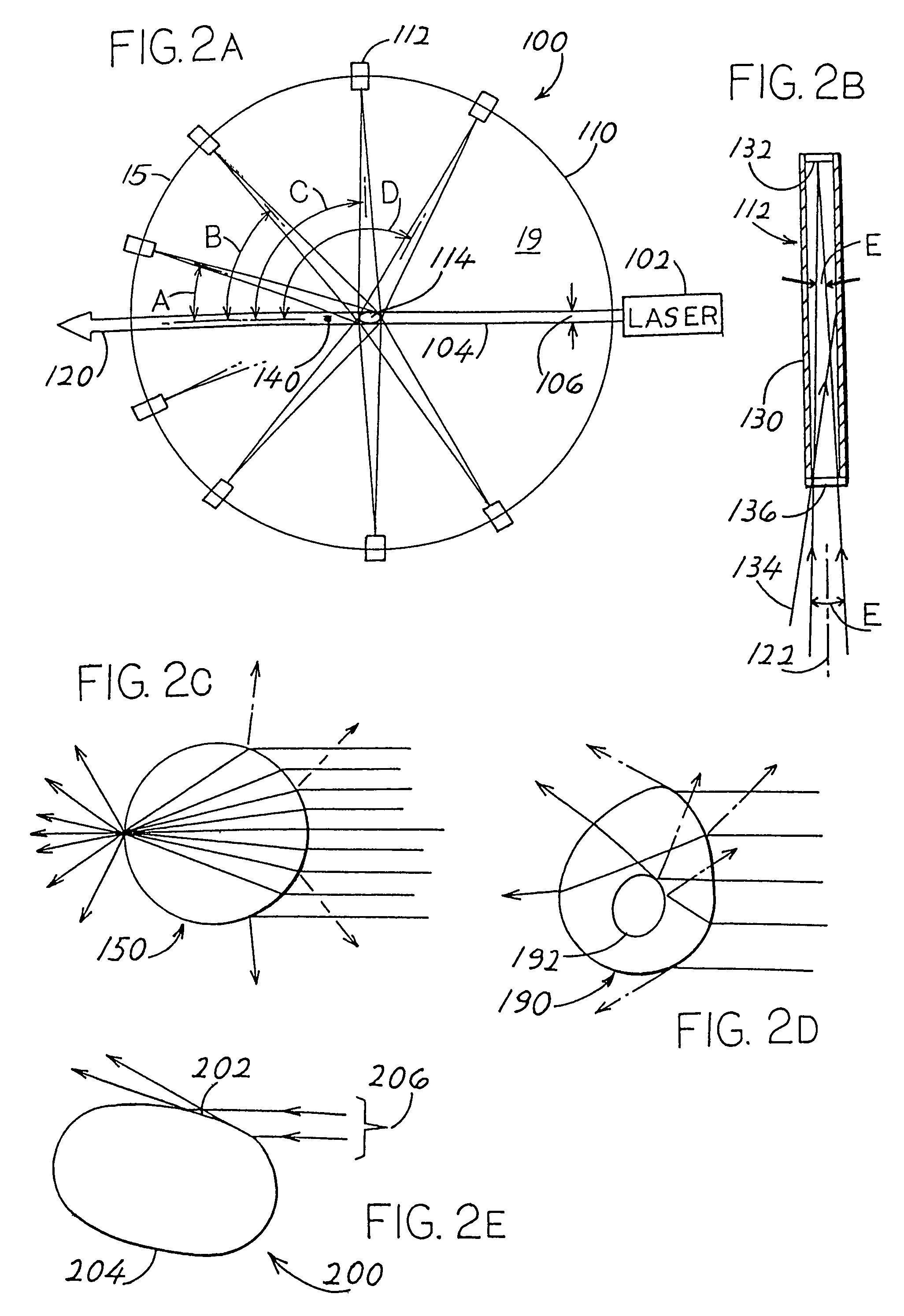Particle ID with narrow angle detectors
a detector and narrow angle technology, applied in the field of particle id with narrow angle detectors, can solve the problems of standard techniques, delay in reducing or eliminating health benefits associated, and well-known and serious limitations of current water quality monitoring techniques for i>cryptosporidium /i>and i>giardia /i>, so as to optimize the disinfection and treatment process and monitor the quality of drinking water.
- Summary
- Abstract
- Description
- Claims
- Application Information
AI Technical Summary
Benefits of technology
Problems solved by technology
Method used
Image
Examples
Embodiment Construction
[0028]The present invention provides a method for the identification of particles in a fluid. More particularly, the invention provides a method for the identification of unknown particles contained in a fluid comprising a source of radiation and at least one detection means to detect said radiation secured in a predetermined position relative to the radiation source, positioned to sample a fluid. The fluid is interrogated by the source of radiation, and the radiation scattered by an unknown particle in the fluid is measured at the detection means. Then, the results obtained in the measurement step are compared with standard results previously obtained from an identified particle of the same type, wherein the standard results are obtained by generating a radiation scattering pattern capable of uniquely identifying the previously identified particles, and the unknown particle is identified based upon the results of the comparison step.[0029]Unless otherwise indicated, the following t...
PUM
 Login to View More
Login to View More Abstract
Description
Claims
Application Information
 Login to View More
Login to View More - R&D
- Intellectual Property
- Life Sciences
- Materials
- Tech Scout
- Unparalleled Data Quality
- Higher Quality Content
- 60% Fewer Hallucinations
Browse by: Latest US Patents, China's latest patents, Technical Efficacy Thesaurus, Application Domain, Technology Topic, Popular Technical Reports.
© 2025 PatSnap. All rights reserved.Legal|Privacy policy|Modern Slavery Act Transparency Statement|Sitemap|About US| Contact US: help@patsnap.com



